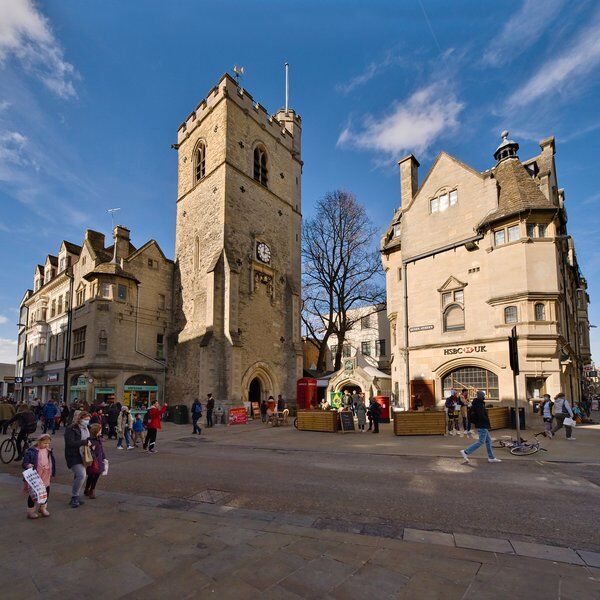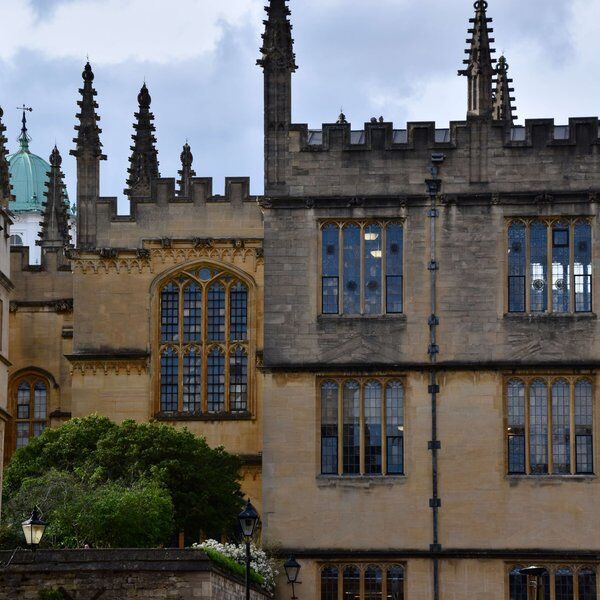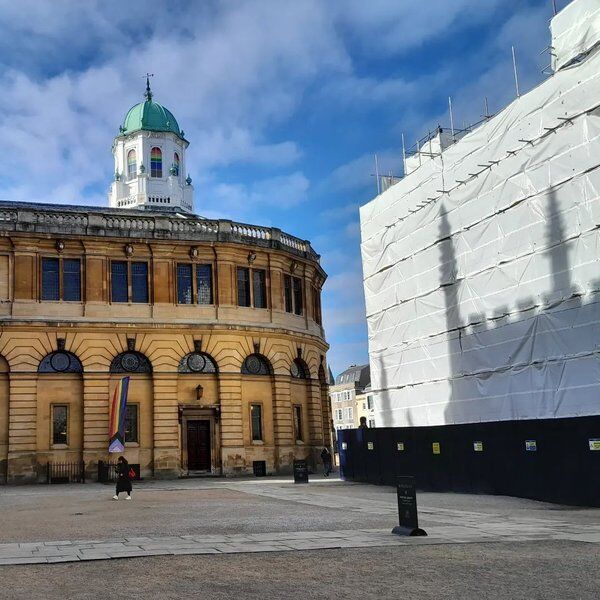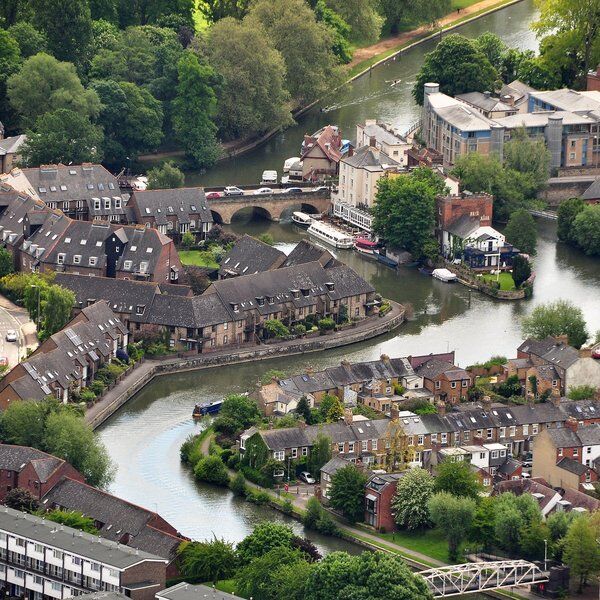John Ronald Reuel Tolkien, better known to the world as J R R Tolkien, died in Bournemouth on 2nd September 1973. Tolkien was beloved in life and after death; several years before he died he had his name removed from the phonebook following an inordinate amount of calls from fans.
It’s no wonder, then, that fans from all over the world still flock to Tolkien’s grave in Wolvercote Cemetery on the outskirts of northern Oxford to pay their respects to the literary giant.
Tolkein’s grave in the verdant, Roman Catholic quarter of the cemetery enjoys a perennial view of fresh flowers and plants left by devoted fans who continue to make the pilgrimage to Wolvercote Cemetery to honour the illustrious author.
Tolkien's Oxford
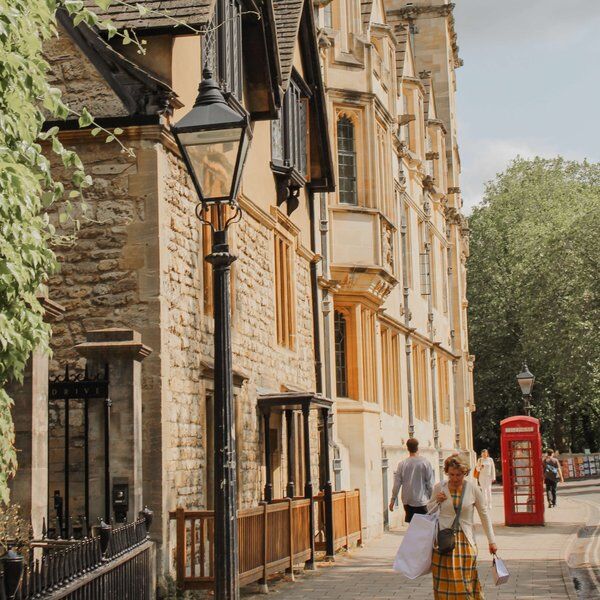
Although Tolkien died in Bournemouth, Dorset, it was his wish that he be buried in Oxford alongside his cherished wife, Edith Mary Tolkien who predeceased her husband by two years.
Tolkien’s love affair with Oxford began in the autumn of 1911. Aged 19, Tolkien enrolled at Exeter College, University of Oxford to study Classics, but changed courses to study English. Deeply studious and academically gifted, Tolkien thrived in the halls of learning that Oxford University provided - so much so that he delayed joining the army for one year to finish his degree at the beginning of WWI. Another reason for the delay could be his engagement to Edith in 1914, who would become his life partner and mother to the couple’s four children.
Following WWI, Tolkien returned to Oxford and his growing family. In November 1918, he got a job working for the Oxford English Dictionary, where he worked on documenting words of Germanic origin beginning with ‘W’.
For those in the know, the city of Oxford and Tolkien’s life milestones are clearly visible in his works, most notably the Lord of The Rings trilogy, its prequel, The Hobbit, and The Silmarillion.
Top Tolkien Sights in Oxford
The Eagle and Child
During the 1930s and 40s, Tolkien and his close friend, C. S Lewis, formed an informal literary group called ‘The Inklings’. The Inklings used an Oxford pub, The Eagle and Child (locally referred to as the ‘Bird and Baby’), as their headquarters, preferring the quiet backroom now called The Rabbit Room.
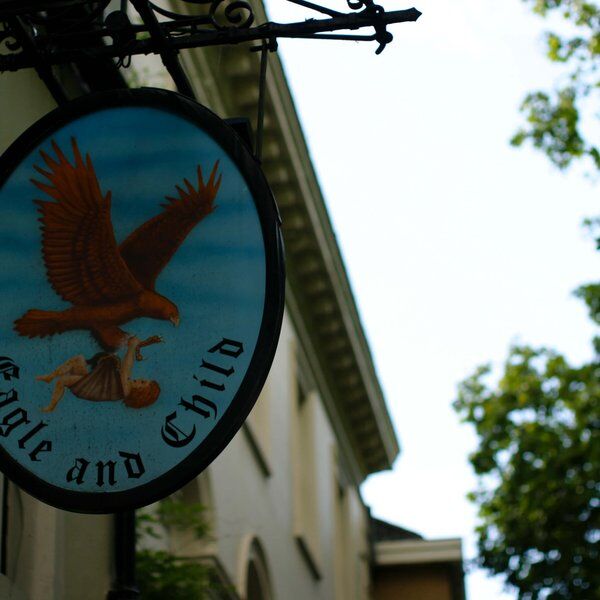
Old Bodleian Library
The Old Bodleian Library at Oxford University was one of Tolkien’s favourite haunts as a student. It was in this 16th-century library that Tolkien found books to satisfy his curiosity of all things mythology - including Welsh folklore.
This is also where Tolkien first stumbled across Finnish, a language that would later influence his own, invented language of Elvish.
Before Elvish, however, Tolkien developed a habit of writing to his children as Father Christmas, and occasionally he would enlist the ‘help’ of a polar bear and two cubs, Paksu and Valkotukka to regale stories of the North Pole. The bear cub names are Finnish and translate as “Thick” and “White-Hair” respectively.
The Father Christmas Letters and many of Tolkien’s original manuscripts and illustrations are kept at the Bodleian libraries.

Oxford Botanic Gardens
Reading Tolkien’s books is like being invited into an atlas of natural splendours. From the lush, green rolling hills of The Shire to the magnificence of the friendly tree-giant ‘Ents’, the natural world provided Tolkien with inspiration for his works.
Tolkien’s favourite tree in Oxford Botanic Garden, an Austrian black pine he nicknamed ‘Laocoon’, was removed in 2014, but Tolkien fans can still sit in the glorious garden that so inspired him.
Psst: Tolkien wasn’t the only author who loved the Oxford Botanic Garden. Lewis Carroll, author of Alice in Wonderland, was also inspired by the garden, as was Phillip Pullman, author of His Dark Materials.
Wolvercote Cemetery & Other Notable Names
I sit beside the fire and think, of people long ago, and people that will see a world, that I shall never know

Tolkien’s grave lies in Wolvercote Cemetery on the outskirts of Oxford. The beloved author’s final resting place is so popular that signs have been put up in the cemetery to direct people to Tolkien's plot.
Wolvercote Cemetery has dedicated subsections for people of different religions, including Judaism, Islam, Quakers, Greek Orthodox, Russian Orthodox, Serbian Orthodox, Polish Roman Catholicism and Roman Catholicism, the latter being where Tolkien and Edith are buried.
Bereaved Tolkien fans can find some comfort at Wolvercote Cemetery, however. Not only is it a gathering place for fans from all over the world to meet and remember their literary hero, but Tolkien’s grave is a peaceful place near the city he so loved.
Further, Tolkien's grave is in good company. Other notable (though less famous) names adorn the gravestones in neighbouring plots at Wolvercote Cemetery which are also worth a visit.
Here are some to look out for:
- Penny Wallace (1923-1997)
A crime writer and daughter of Edgar Wallace, Penny Wallace was particularly famous in Germany where her five novels were published. Wallace was also Chair of the Crime Writers’ Association. - Walter McGehee Hooper (1931-2020)
Originally from the United States, Walter Hooper was C.S Lewis’ private secretary when the latter became ill. Following Lewis’ death, Hooper became a C.S Lewis custodian, advocate and editor. He also researched The Lewis papers, which discuss the friendship between Lewis and Tolkien. - Elizabeth Jennings (1926-2001)
Elizabeth Jennings (CBE) was a poet and fellow Roman Catholic. Jennings wrote poems about receiving treatment for her mental health before it was universally popular to do so. - James Allen Shuffrey (1858-1939)
True Tolkien fans know that the great author’s creativity was not limited to his linguistic abilities. Tolkien’s vibrant watercolour paintings are famous for their bright colours and attention to detail, but just a stone’s throw away from Tolkien’s grave lies another Oxford watercolourist, James Allen Shuffrey. Shuffrey’s paintings depict Oxford as it was in the 19th and early 20th centuries and are as beautiful as they are historically valuable. - Daphne Park (1921-2010)
While her name is probably unfamiliar to you, Daphne Park was probably one of the coolest women of the 20th century. Nicknamed ‘Queen of Spies’, Daphne Park was a British Intelligence Officer, diplomat and public servant. She served in Moscow, Congo, Zambia and Hanoi and was made a Baroness for her dedicated service by Queen Elizabeth II.
The Best Way to Visit Tolkien’s Grave
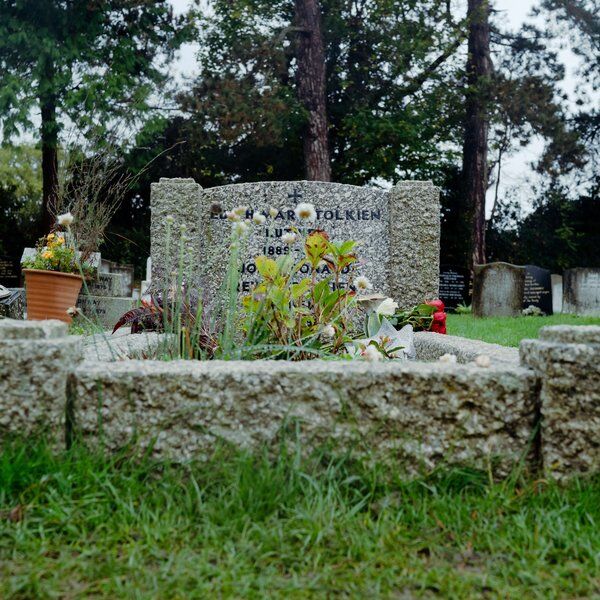
Interested in visiting Tolkien’s grave and finding more hidden gems in Oxford?
We can help you there!
The best way to discover more hidden gems around Oxford is to take your time and, ideally, have a pre-planned route that takes you past all the noteworthy nooks and hidden gems.
We can help you there!
CityDays have two outdoor treasure hunts in Oxford to choose from: Scholars and Spires and Ancient Echoes. Both combine the fun of an escape room with the historic facts and whimsical trivia of a walking tour.
Both routes take you around Oxford on a curious journey that will take you into the city’s fascinating alleyways while learning more about Oxford’s turbulent history in a new and interactive way.
Take the stress out of planning your visit to Oxford and book your adventure today!
Not visiting Oxford this time? Don’t worry, you’ll find us all over the world.





